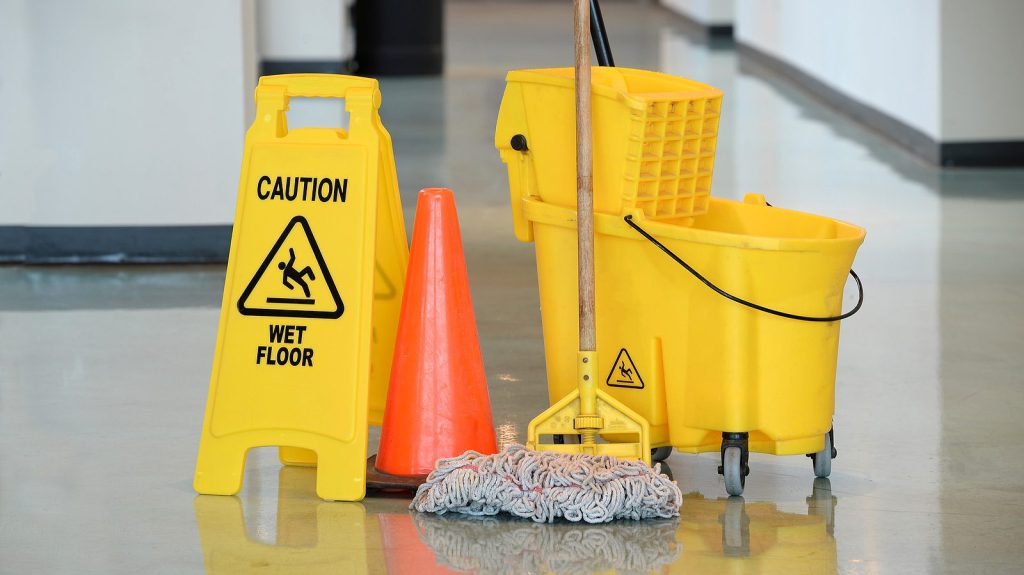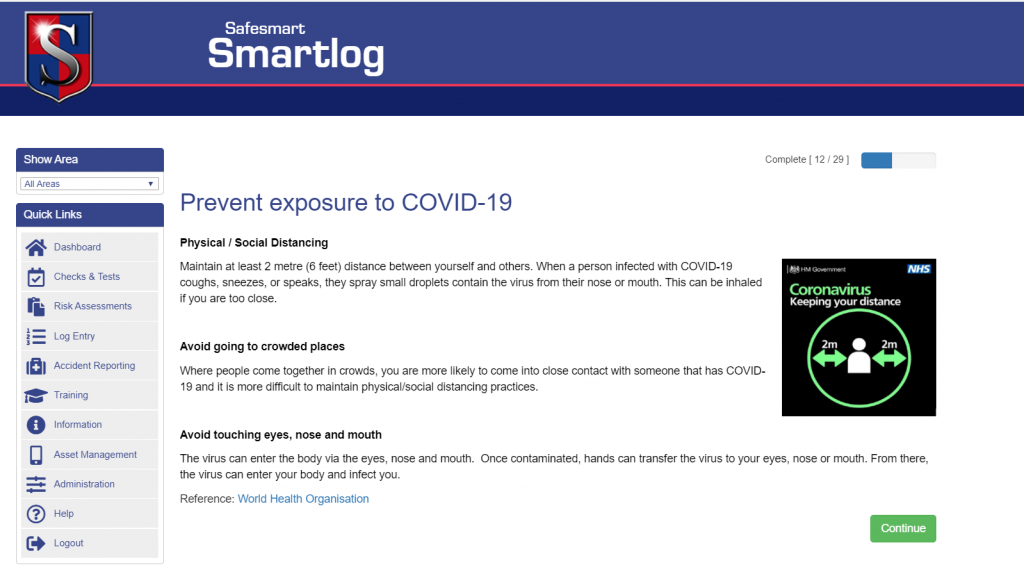
England’s Fire and Rescue Services attend around 65,000 fires every year, with 14,000 of them taking place in business premises. Evidently, fire safety is crucial to any organisation, and we can never be too safe when dealing with something so devastatingly dangerous.
Who is responsible for your fire safety?
By law, you need to reach a minimum standard for preventative fire safety measures in all buildings except single-owned dwellings, as per the Regulatory Reform (Fire Safety) Order 2005. This order holds a legal obligation for the ‘responsible person’ to manage the fire safety of the premises.
The ‘responsible person’ is most likely the employer, but can also be the building owner or the person that has control over the premises. Their responsibilities include but are not limited to:
- ensuring that a fire risk assessment has been completed by a competent person,
- ensuring the safety of their employees from harm,
- providing employees with relevant information on the risks identified and measures to prevent it,
- providing employees with adequate fire safety training.
The responsible person is held accountable for an organisation’s fire safety standards, and can face unlimited fines or a prison sentence for up to 2 years if they do not withhold these standards.
In this blog, we have compiled a short list of important checks you should carry out alongside your other preventative safety measures.
1. Check your fire alarms
Fire alarms play a vital role in saving lives, so it is key that they are checked regularly.
Article 17(1) of the Regulatory Reform (Fire Safety) Order 2005 (RRO) requires the responsible person to ensure that any fire alarm system are “subject to a suitable system of maintenance and are maintained in an efficient state, in efficient working order and in good repair.”
To comply with this legislation, you should check your fire alarms weekly.
All manual call points should also be checked at the same time for damage, and you must make sure they are easily accessible with nothing obstructing them.

2. Check your bins
Bins are a common target for arson, which according to The National Fire Chief’s Council (NFCC), are the leading cause of fires that require a response from the Fire & Rescue services. Therefore, maintaining and checking them regularly is key to minimising risk.
You need to check that external bins are not located close to buildings and are emptied regularly. You also need to check that fuels or anything that has been previously alight is correctly disposed of (e.g. cigarettes and matches).
Some other preventative measures you can take include:
- Keeping large bins and waste locked away, so they are not accessible to anyone unauthorised
- Ensure bins are not wall-mounted beneath a window, by a door, or an overhanging roof
- Ensure they are kept away from the perimeters of the property
3. Check your fire doors and fire exits
Fire doors are key to preventing the spread of fire, as they can hold back smoke and flames between 30-60 minutes, depending on their quality. The first thing you should check:
Is the door structurally intact?
This means that there is no damage to the door and it is still fitted correctly, with the closing mechanism still automatically closing the door shut.
It is also important to check that your fire doors are not being propped open by an object.
Next, the condition of cold smoke seals and intumescent strips needs to be checked for damage.
Without these, the door loses functionality and will no longer meet the required standards. It is also important to check that the door’s opening mechanism works well every time.
And finally, for fire exits you should check that the path is clear and there is nothing obstructing them.
4. Check your signage

The law requires the responsible person to ensure that all emergency routes and exits are indicated by signage.
You need to check that signs are clean and visible, so that in case of an emergency the way out is clear and well-lit.
Also check that signs are not damaged or have a loose fixing, as this may become problematic if not fixed.
5. Check your electrical equipment
Faulty and misused electrical equipment is a common cause of fires, so it is important that they are checked regularly as part of your fire safety checks.
They often have many hazards to check for, from where they are placed to the sockets they are plugged into. You need to check that:
- Plug sockets are not overloaded or hot
- Wires and cables are not damaged
It is also important to make sure that anything that may get hot or has moving parts (like fans) are kept clear of any obstructions and are at no risk of falling over.
It is also good to make sure all electrics are PAT tested, as that is one of the ways you can fill the legal duty to maintain your electrical equipment to a safe standard, as per the Electricity at Work Regulations 1989.
6. Check your fire extinguishers
BS 5306-3:2017 is the British standard for fire extinguishing installations and equipment on premises, and Paragraph 11.2 recommends that all fire extinguishers are subject to a visual inspection by a competent person on a monthly basis. The result of the test should be recorded, and any deficiencies acted upon.
To meet this standard, the check must ensure:
- Each extinguisher is correctly located in the designated space, is unobstructed, and accessible
- The operating instructions are clean, legible, and face forwards
- The reading of the pressure gauge is within the ‘green’ zone and any indicator is within safety limits
- Each extinguisher has not been used, damaged, or tampered with

Fire extinguishers must be readily available for use throughout the building but especially on an emergency exit route. They need to be checked regularly for obstructions that may block access to them and for damage.
Also, are there enough of the right extinguisher type for the risks present?
For example, you should have enough CO2 extinguishers for use on any electrical fires that are accessible throughout the whole building – minimum requirements should be detailed within your fire risk assessment. For advice on this you, you can also try our free fire extinguisher calculator.
7. Check your emergency plan
It is also key to make sure that there is a suitable emergency plan for when a fire is detected. The law places a duty on the responsible person to manage arrangements for actions to be taken in the event of a fire on the premises.
The emergency plan should include:
- A detailed description of everybody’s roles
- The alarm systems in place to alert everybody
- All assembly points
- Arrangements for the evacuation of the vulnerable (young children, disabled, elderly etc.)
- Contingency plans
Overall, these checks will help give you that little bit more confidence and peace of mind. If completed regularly, they will also boost the fire safety standards in your premises and make sure that any simple-to-fix flaws are checked for regularly.
These checks will also aid in helping you comply with your responsibilities as a ‘responsible person’, but they should ideally be used to complement established professional fire safety measures you follow, not replace them.
Bibliography
The National Archives (2005) ‘The Regulatory Reform (Fire Safety) Order 2005’. Available at: https://www.legislation.gov.uk/uksi/2005/1541/contents/made (Accessed: 28/04/2023)
Gov.uk (2023) ‘Fire safety in the workplace’. Available at: https://www.gov.uk/workplace-fire-safety-your-responsibilities (Accessed: 28/04/2023)
BSI (2017) ‘Fire extinguishing installations and equipment on premises – Commissioning and maintenance of portable fire extinguishers. Code of practice’. Available at: https://knowledge.bsigroup.com/products/fire-extinguishing-installations-and-equipment-on-premises-commissioning-and-maintenance-of-portable-fire-extinguishers-code-of-practice-1/tracked-changes (Accessed: 28/04/2023)
NFCC (2019) ‘Arson’. Available at: https://www.nationalfirechiefs.org.uk/Arson (Accessed: 28/04/2023)
Gov.uk (2023) ‘Fire statistics data tables’. Available at: https://www.gov.uk/government/statistical-data-sets/fire-statistics-data-tables (Accessed: 02/04/2023)












